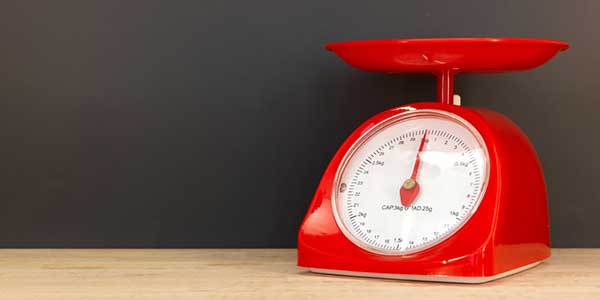
What Is a Food Weight Scale?
A food weight scale is exactly as the name implies, a smaller scale indicating the volume of food placed atop. It is incredibly valuable to identify and recognize what portion sizes actually look like, not just what large servings have transformed into. And especially if beginning a weight loss journey, a food scale can raise awareness on proper food portions and reduce the risk of overeating. Although calories play a large role in weight loss, sticking to recommended servings and portions can naturally facilitate their balance.
Food scales do come in various models with varying price tags. Nutrition experts mostly encourage individuals to choose a model that fits their budget, displays easy-to-read numbers, and holds the volume of food you need it to. If its use becomes an everyday commodity and desiring more from a product, you can always upgrade models, as some even display the nutritional values in conjunction with the weight!
How to Measure Food Portions
Along with food scales, there are additional tools and tips to measure and stick to recommend servings:
• Measuring Cups and Spoons
Measuring cups and spoons also serve great value in measuring out serving sizes. They are also much more accessible and convenient for travel, especially if desiring measuring servings on-the-go. Additionally, utilize the right measuring cup for the appropriate ingredient, as dry and wet ingredients measure best in their accommodating cup, further outlined here.
• Common Objects
While scales and measuring cups are valuable, they may not always be the most convenient, particularly when eating out. Though you can certainly take them to the restaurant, doing so may not be the most desirable. To keep portions in check in their absence, you can also identify serving sizes based on common objects. For instance, a cup of cereal is about the size of a fist, 3-ounces of meat is equivalent to a deck of cards, and two tablespoons of peanut butter is comparable to a ping pong ball.
• Food Journal
Although not a direct way to size portions, a food journal can keep you accountable on your diet. Individuals who keep track of foods and portions throughout the day not only gain insight on the amount of food they are actually consuming, but may be inclined to essentially "clean up" the diet. For instance, consuming that large chocolate chip cookie is less likely to occur if it means having to write it down on pen and paper...
Lose Weight with bistroMD
Although the resources and tools are valuable for weight loss, bistroMD understands a busy lifestyle may warrant alternative options. No food weighing requiring, bistroMD offers and ensures all delivered meals are balanced and portioned to meet the needs your body requires and desires for not just weight loss, but for optimizing health. Each meal contains 1,100 to 1,400 calories daily with 40 to 50 percent of total caloric intake from lean, adequate protein, 20 to 25 percent of calories from healthy fats, and 30 to 35 percent from complex carbohydrates. And along with being nutritionally adequate, all meals are rich in flavor! For more information, visit the official site at www.bistromd.com or call 866-401-3438 today!







